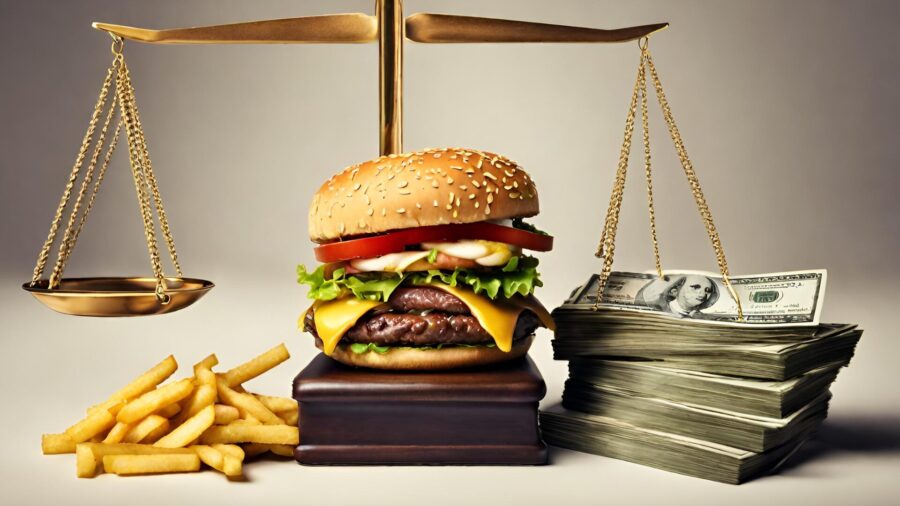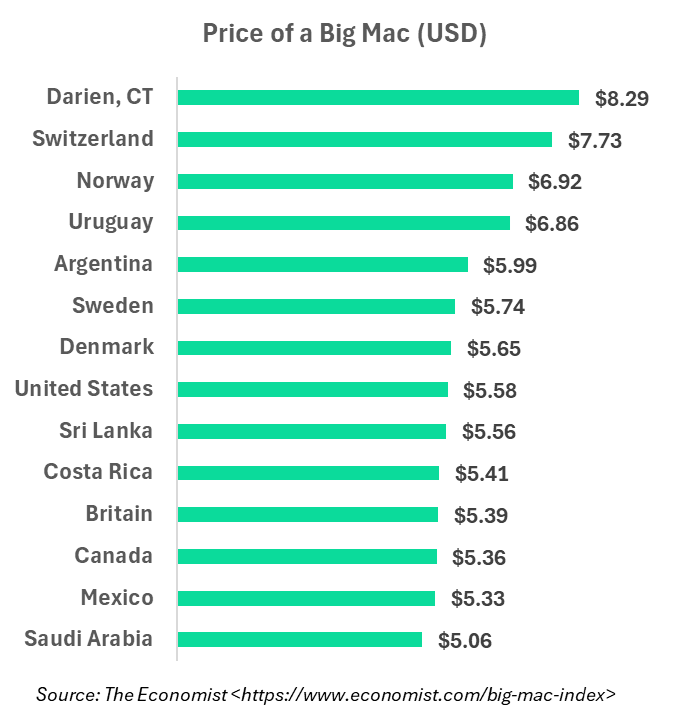In the world of fast food, the Big Mac has become more than just a burger; it’s a barometer for global economics. The recent uproar over a McDonald’s in Darien, Connecticut, that charged a whopping $17.59 for a Big Mac combo meal is more than just local news; it’s a snapshot of the changing economic landscape.
The ‘Burgernomics’ phenomenon, as it’s playfully termed, stems from the Big Mac Index, an informal but widely recognized measure of purchasing power parity (PPP) between two currencies. Introduced by The Economist in 1986, the index compares the price of a Big Mac across different countries to assess whether currencies are at their “correct” level. It’s a blend of economics and fast food, offering a digestible take on complex fiscal concepts.
In this context, the Darien McDonald’s stands out not just in the U.S. but on a global scale for its Big Mac pricing. While the average cost in the U.S. is around $5.35, Darien’s $8.29 Big Mac surpasses even the most expensive Big Macs globally, including its Swiss counterpart at an average of $7.73.
The disparity in Darien is stark. Notably, just a short drive away, prices plummet by nearly $3 for the sandwich and $9 for the meal, underscoring the franchise’s policy that allows individual pricing.
This price hike at one of America’s most iconic fast-food chains is more than just a matter of paying extra bucks for a burger. It’s a reflection of broader economic shifts. High prices at fast food joints, once the bastion of affordable eating, signal changes in consumer spending, inflation, and the economic well-being of a nation.
But it’s not just about the economics – there’s a human element, too. The price surge hits the wallet of average Americans, who turn to fast food for a quick, budget-friendly meal. Families especially feel the pinch – the added cost of delivery services, sometimes tacking on an extra $10 to $20, only deepens the financial blow.
The Darien McDonald’s saga is more than just a story of one overpriced burger. It’s a microcosm of global economic trends and a poignant reminder of the financial realities facing everyday consumers. The Big Mac, in this scenario, is both a culinary icon and an economic indicator, offering insights into the complex interplay of currency valuation, purchasing power, and consumer behavior on a global scale.













